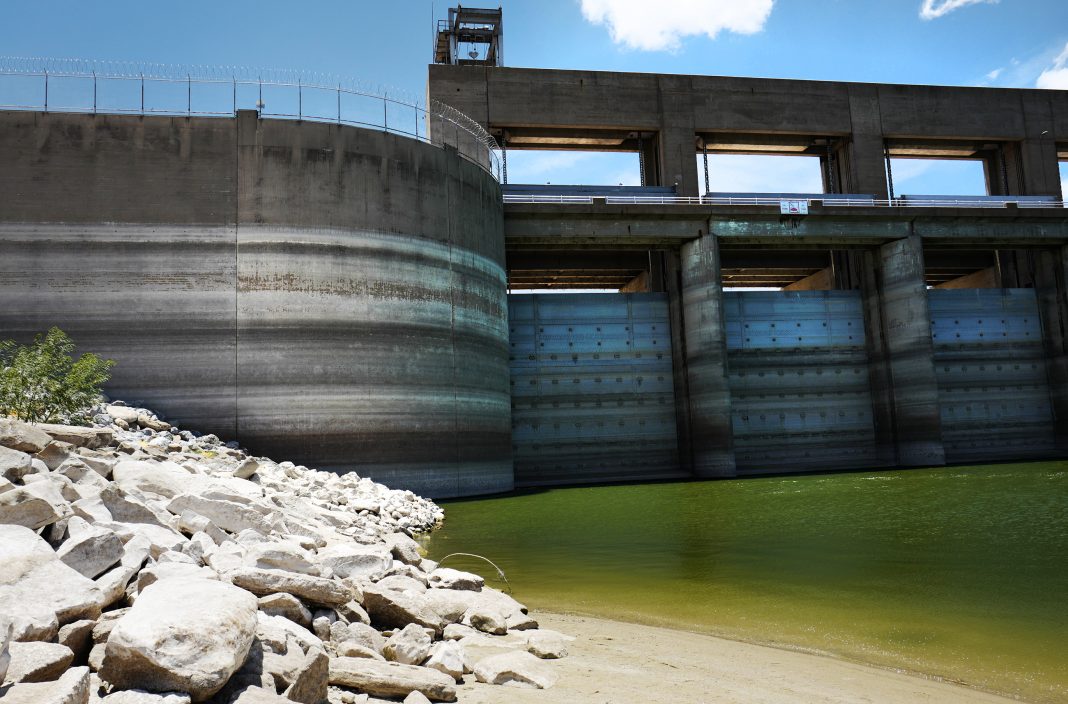
Halfway into a five-year cycle where Mexico must deliver a deluge of water to the United States, the country is already falling far behind in meeting its obligations.
It’s a continuation of a yearslong issue that has officials at the International Boundary and Water Commission looking to head off problems long before the next deadline arrives in October 2025, rather than at the 11th hour, as has previously been the case.
To that end, on Wednesday, the IBWC presented the findings of a whitepaper it commissioned last June to explore how the water delivery process works, as well as what limitations and advantages the U.S. has under a 1944 binational treaty that governs ownership of the Rio Grande’s water.
The whitepaper also looked at concerns from stakeholders on both sides of the border.
The IBWC presented the findings Wednesday during a quarterly meeting of the Lower Rio Grande Citizens Forum.
It represents the first big step the commission has taken toward creating a new “Minute,” or decision, that guides how U.S. officials and their counterparts in Mexico implement the treaty.
Officials hope to develop a new Minute by the end of this year. The hope is that the Minute will help mitigate some of the most recent unpredictability of Mexico’s water deliveries to the U.S.
“We are on track this year to work towards bringing a Minute together that will address what the goal of Minute 325 was … reliability,” IBWC Commissioner Maria Elena Giner explained to the group of over 50 attendees of Wednesday’s webinar.
Under the treaty, Mexico must deliver 1.5 million acre-feet of water to the U.S. via the Rio Grande and the six Mexican tributaries that feed the river.
However, during the last two cycles — which ended in October 2015 and October 2020, respectively — Mexico has come dangerously close to not meeting its obligations.
During the 2020 cycle, Mexico came within three days of defaulting before ultimately transferring ownership of water it had stored in Amistad and Falcon international reservoirs to the United States.
But the solution was one on paper only. The ownership transfer did nothing to physically raise water levels at the reservoirs amid a persistent drought. Instead, it moved numbers from one side of a ledger to another.
And now, three years into the current cycle, Mexico is once again behind. It has delivered just 22% of the 1.5 million acre-feet of water it is required to deliver to the Rio Grande during a five-year cycle.
Ideally, those deliveries would be divided into about 350,000 acre-feet per year.

Instead, Mexico is so far behind that it has only delivered 336,411 acre-feet of water as of March 4 — two years and five months into the current cycle.
The whitepaper doesn’t suggest solutions for the problem, but it does give officials a baseline from which to work. It gives them the lay of the land as things currently are.
Kathy Robb, the consultant who produced the whitepaper, interviewed more than 50 stakeholders. Their comments give the IBWC new insight into where Mexican and American stakeholders agree, where they don’t, and what they think might help.
For instance, there is a mutual lack of trust on both sides of the river, partly due to the water deliveries themselves, but also partly due neither side having a good grasp of how the other operates, Robb said.
“Someone from Texas would say, ‘We just have no idea how they’re operating their system,’” and vice versa, Robb said.
There are also mutual concerns over water theft, infrastructure improvement needs, who’s in charge, and even how to interpret the treaty.
So, while the issues may continue to loom large, the fact that so many stakeholders were able to identify the same things as problems bodes well for the possibility of finding solutions.
“The stakeholders agreed on a number or factors … that suggest that it can be possible to reach an agreement,” Robb said.




